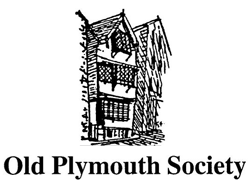by Doreen Mole
Published May 2012
Members who visited Plymouth and West Devon Record Office as part of last years summer programme, might remember a map which was on display that evening. That map, drawn before1665, was used in an appeal by Sir William Strode to Charles the Second in 1671 for compensation when “the Ground in question” had been acquired by the Crown to build the Victualling Offices and Storehouses at Lambhay.
One of the pictorial features of this map or plan, is a cannon in the act of being fired, situated on the Barbican. I assumed that this was a depiction of armed defence at the time the map was drawn. But, shortly after noticing this feature, I was reading “An essay towards a history of Plymouth” by John Harris written in 1808, and came across this passage.
“The Barbican was neatly paved and kept very clean, and some years ago it was the place to hear the news of the day, and much resorted to. On the pavement, part of which remains to this day (1808) was the resemblance of a man in the act of firing a cannon.
After the labour taken to record the circumstance, it is a pity that the date was not inserted. I cannot find that it was. There is a traditional account given respecting the occasion of it’s being recorded or perpetrated, Plymouth having been long besieged, and the beseiged having expended all their ammunition except one charge. The last cannon was loaded with all kinds of iron, or anything that could be readily got, and placed on the road by which it was known that the Enemy was to enter the Town, and being left in an advantageous situation. Yet, one was wanted who would be bold enough to remain there to receive the Enemy’s fire. One volunteered, and he hid himself until the body of the beseigers completely filled the lane, when he did his duty by firing the cannon, which scattered death in many shapes, and made them retire for some minutes. The Cannoneer lost his life.”
John Harris’s writing has made me look at the map in a new light. Did the draughtsman depict a real cannon, which was actually standing on the Barbican, or did he draw the carving or statue or whatever form the resemblance took, that John Harris refers to ?
